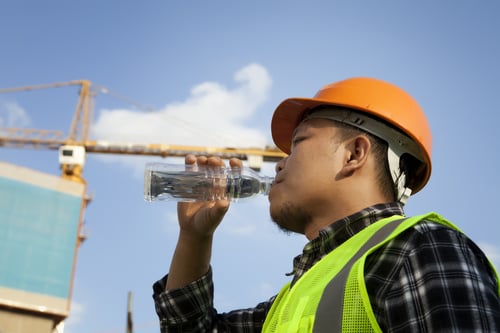
As we enter the summer season in Florida, temperatures begin to peak and reach potentially dangerous heights for outdoor workers. If you are one of those sweating your way through the work week, you should be aware of the numerous health risks associated with extreme heat and how to avoid them.
How Much is Too Much?
Ideal working temperatures can vary from person to person and can even depend on the type of work you are doing. Generally, the ideal temperature is around 73 degrees Fahrenheit, but if you are doing labor intensive work, the ideal temperature can be as low as 55 degrees Fahrenheit. The key is to keep your internal temperature as close to 98.6 degrees Fahrenheit as possible.
What Are the Associated Health Risks?
Extreme heat can lead to on-the-job illness such as heat cramps, heat exhaustion, and even a potentially fatal heat stroke. Knowing and watching for symptoms can save your own life as well as the lives of your coworkers.
Symptoms of heat stroke include:
- Extremely high body temperature above 103 degrees Fahrenheit
- Skin that appears dry and red, and is hot to the touch but is not sweating
- Rapid pulse
- Headache
- Dizziness and/or nausea
- Unconsciousness
People who are overweight, have heart problems or are on a low-sodium diet are at an increased risk and should consult their physician before working in extreme heat.
What Precautions Can I Take?
For workers, the following precautions can be taken to reduce you or your coworker’s risk of heat exhaustion:
- Please pay close attention to your fluid intake. Drink plenty of water and alternate with a Gatorade or other electrolyte replacing fluid.
- Make sure you have adequate shade cover and take frequent breaks.
- Watch out for each other and make sure everyone is doing the same.
- Do not hesitate to stop and seek a cool shelter if you feel the heat is too much.
For employers, the following precautions can be taken to avoid exposing your workers to potentially dangerous situations:
- Schedule jobs in warmer regions for the cooler months.
- Allow workers, new to the outdoor work environment, adequate time to get acclimated to the heat.
- Assign extra workers for physically demanding jobs so that people can take breaks as needed.
- Schedule resting times and provide workers with cool water.
- Provide employee training for dealing with heat.
If you suspect you or one of your workers is suffering from heat exhaustion, quickly move them to a shaded area and spray them with cool water. Do not provide fluids to drink until the body temperature reaches normal levels.
Have an Emergency Plan
Returning to physical activities outdoors after a long weekend or after taking time off can make it seem more intense. It is important to know and recognize the symptoms of heat-related illness in yourself and your coworkers during the warmer seasons.



